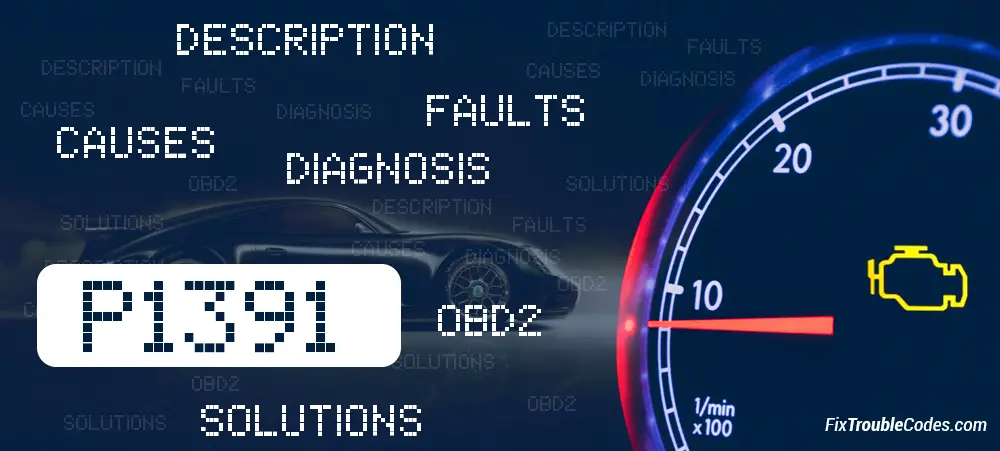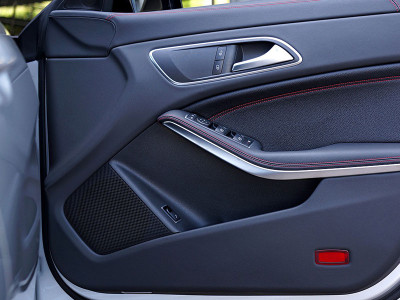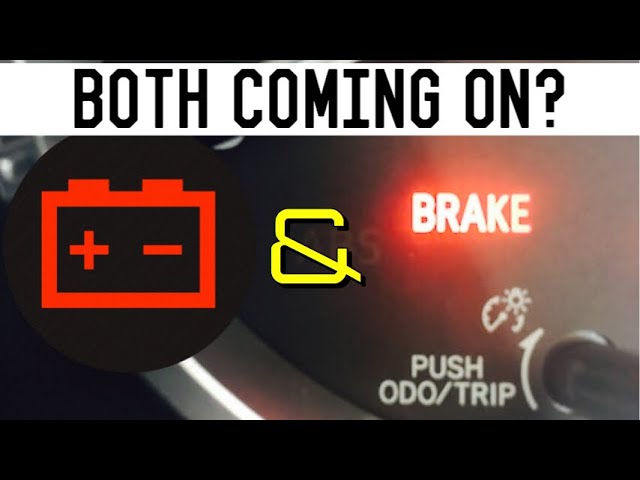The P1391 Dodge Ram 1500 error code, while not immediately alarming, can lead to significant issues if overlooked.
Its symptoms might be subtle, but the underlying problems, often related to the crankshaft or camshaft position sensor, can seriously impact your vehicle’s performance.
This article is your guide to understanding the common causes of this Diagnostic Trouble Code (DTC) and the most effective solutions.
We aim to empower you with the knowledge to tackle this issue head-on, ensuring your Dodge Ram 1500 remains in peak condition.
So, buckle up and let’s dive into the world of P1391 Dodge Ram 1500 error code!
What is the Meaning of the P1391 Code?
The P1391 code is a specific type of diagnostic trouble code that is activated when the vehicle’s Powertrain Control Module (PCM) or Engine Control Module (ECM) detects that the vehicle is exceeding acceptable RPM parameters before a shift occurs.
This code is often linked to issues in the camshaft position sensor (CMP) or the crankshaft position sensor (CKP).
However, the exact definition and the components involved can vary depending on the vehicle make.
For some manufacturers, P1391 is activated when the PCM detects that the glow plug control circuit has a low input voltage.
It’s crucial to address this code as it can affect the vehicle’s performance.
What Triggers the P1391 Code in a Dodge Ram 1500?
The P1391 error code in a Dodge Ram 1500 can originate from a variety of sources.
These include a malfunctioning cam or crankshaft position sensor, inadequate input voltage, faulty wiring between the sensors and the Powertrain Control Module (PCM), or subpar G-sensors.
Additionally, a defective PCM or Body Control Module (BCM), a timing chain that has skipped a tooth or a failed timing belt, and a compromised valve lifter can also contribute to the occurrence of this code.
Understanding these potential causes is the first step towards effectively addressing the P1391 error code.
-
Inadequate Valve Lifter Performance
The valve lifter, a critical component nestled on the camshaft, plays a pivotal role in the smooth operation of your Dodge Ram 1500. It is responsible for transmitting the opening and closing movements of the valve to the lifter and rocker’s arm.
However, when the valve lifter’s performance is compromised, it can disrupt this crucial process. Given that the valve lifters are directly connected to the camshaft, any malfunction can trigger the camshaft position sensor.
This, in turn, may result in the emission of a “P1391 Crank or Cam Loss” signal, indicating a potential issue that needs immediate attention. Understanding the role of the valve lifter and its impact on the P1391 error code is key to maintaining the optimal performance of your vehicle.
-
Issues with the Timing Chain or Belt
The timing chain or belt is a crucial component of the camshafts and crankshafts in your Dodge Ram 1500. It plays a vital role in synchronizing the control time between the crankshaft and camshaft, ensuring smooth operation.
However, if the timing belt fails or a tooth on the chain is skipped, it can lead to the P1391 error code. This is because such issues can disrupt the synchronization, causing cam loss and crank problems.
Consequently, the crank or cam sensor may register a fault. Understanding the importance of the timing chain or belt and its potential impact on the P1391 error code is key to maintaining your vehicle’s performance.
-
Malfunctioning BCM or PCM
The Body Control Module (BCM) or the Powertrain Control Module (PCM) play a crucial role in the functioning of your Dodge Ram 1500. When either of these modules detects a failure in the Camshaft Position (CMP) sensor or the Crankshaft Position (CKP) sensor, it stores the P1391 error code in its memory.
The appearance of this code signifies a signal loss or sensor failure, which can adversely affect fuel efficiency and engine performance. When you take your Dodge Ram to an auto shop, the mechanic will use a diagnostic scanner to identify the stored trouble code and address it.
Moreover, they will inspect the sensor, connectors, and wires associated with this code to rectify the issue. Understanding the role of the BCM and PCM and their potential impact on the P1391 error code is key to maintaining your vehicle’s performance.
-
Complications with G-Sensor Performance
The appearance of the P1391 code in your Dodge Ram 1500 could be linked to issues with the G-sensor performance. However, it’s important to note that a sensor failure isn’t always the immediate cause when this error code surfaces.
Factors such as abnormal spikes in vertical acceleration, which can be a result of transmission line deviation, misfires, or hitting potholes, can trigger this code. Driving in challenging terrain conditions can also lead to the activation of the P1391 code.
Furthermore, the G-sensor may share the same PCM voltage with the ground connection of the AC pressure sensor, making the identification of the root cause a complex task. Understanding the role of the G-sensor and its potential impact on the P1391 error code is key to maintaining your vehicle’s performance.
-
Issues with Wiring Between PCM & Sensor
The wiring that connects the Powertrain Control Module (PCM) to the crankshaft and camshaft sensors is a vital component of your Dodge Ram 1500’s operation. These wires are responsible for transmitting signals between these parts, ensuring smooth communication and performance.
However, if these wires become corroded or fail, they can no longer transmit signals effectively. This disruption in signal transmission is one of the potential causes of the P1391 Dodge code. Understanding the importance of these wires and their potential impact on the P1391 error code is key to maintaining your vehicle’s performance.
-
Low Input Voltage Issues
The P1391 code in your Dodge Ram 1500 can also be triggered by insufficient input voltage. Specifically, if the Powertrain Control Module (PCM) in your vehicle detects low input voltage in the control circuit of the glow plug, the P1391 code may appear.
It’s important not to overlook issues with the glow plug, as they could be the root cause of this trouble code. Understanding the role of input voltage and its potential impact on the P1391 error code is key to maintaining your vehicle’s performance.
-
Complications with the Camshaft Position Sensor
The primary culprit behind the P1391 code is often a faulty camshaft position sensor (CMP). A clear indication of this issue is when the CMP becomes shorted due to a poor electrical connection.
Additionally, an intermittent condition in the camshaft position sensor can also trigger this trouble code. Therefore, it’s crucial to monitor the CMP for any abnormal issues and undertake the necessary repairs.
Even after replacing the CMP, if your vehicle continues to display the P1391 code, further investigation is needed to identify the underlying reasons and implement the appropriate fixes.
Understanding the role of the CMP and its potential impact on the P1391 error code is key to maintaining your vehicle’s performance.
-
Issues with the Crankshaft Position Sensor
The crankshaft position sensor plays a crucial role in your Dodge Ram 1500, sending signals to your vehicle’s dashboard about its operational status. If these sensors are defective or worn out, they may fail to deliver accurate data to the vehicle’s computer.
This malfunction can trigger the P1391 code in your Dodge Ram 1500. In such cases, replacing the crankshaft sensors becomes necessary. Understanding the role of the crankshaft position sensor and its potential impact on the P1391 error code is key to maintaining your vehicle’s performance.
What Are The Common Symptoms of P1391 Dodge Ram 1500?
The P1391 error code in your Dodge Ram 1500 can manifest in several ways. One of the initial signs is an illuminated check engine light, signaling a potential issue with the Crankshaft Position (CKP) or Camshaft Position (CMP) sensor.
Another early symptom is difficulty in starting your vehicle, or it suddenly stalling, which could indicate the presence of the P1391 error code.
Moreover, if your engine starts behaving unpredictably, such as experiencing sluggish acceleration or a rough idle, it could be a clear indication of a malfunctioning CMP sensor associated with the P1391 code.
Lastly, the emission of white smoke, typically linked to coolant leaks, can also be a symptom. While this can occur when the car is started on a cool day, recurring instances might point towards the P1391 code being the culprit.
It’s crucial to stay vigilant for these symptoms to ensure the optimal performance of your Dodge Ram 1500.
How Do You Fix P1391 Dodge Ram 1500?

- Review Relevant Technical Service Bulletins (TSBs): Examine the appropriate TSBs for any existing issues with your vehicle. These bulletins often provide valuable insights into common problems and their solutions.
- Record the Error Code: Utilize an OBD-II scanner to identify any trouble codes and freeze frame data that appear alongside the P1391 code. This information can be crucial in diagnosing the issue.
- Inspect the Components: Check the connectors, wires, and other related parts for signs of corrosion, burn marks, damage, or saturation. These issues can disrupt signal transmission, leading to the P1391 code.
- Perform a Continuity Test: Conduct a continuity test to check the fusible links and all fuses. If necessary, inspect the reference voltage and ground to ensure they are within the acceptable range.
- Run a Sensor Test: If the P1391 code is present, perform a sensor test to identify any failures with the glow plugs. These components are crucial for the proper functioning of your vehicle.
- Test the Wiring to the Relay: If the error code persists, test the wiring to the relay. Repeat the test to confirm whether the components need fixing.
- Check the Operating Voltage: Verify the voltage at which the glow plug relay operates. The measurements should align with the Original Equipment Manufacturer (OEM) values.
- Perform a Glow Plug Wire Test: Carry out a glow plug wire test in the system with the control module. This can help identify any issues with the glow plug wires.
- Check Glow Plug Resistance: After inspecting all other suspect components, continue checking the resistance of the glow plugs. Any discrepancies can indicate a potential issue that needs to be addressed.
FAQs – P1391 Dodge Ram 1500
Can I drive my Dodge Ram 1500 with the P1391 error code?
While your vehicle may still operate with the P1391 error code, it’s not recommended to ignore it. The error could indicate serious issues that may affect your vehicle’s performance and could potentially lead to more costly repairs if not addressed promptly.
How often should I check the camshaft and crankshaft position sensors?
It’s advisable to have these sensors checked during your regular vehicle maintenance. However, if you notice any performance issues or if the P1391 error code appears, you should have them inspected immediately.
What tools do I need to fix the P1391 error code?
Basic tools like a multimeter for checking voltages and continuity, and an OBD-II scanner for reading error codes are typically needed. However, depending on the exact issue, additional tools may be required.
Can weather conditions cause the P1391 error code?
While weather conditions themselves don’t directly cause the P1391 error code, they can exacerbate existing issues. For example, cold weather can affect the performance of the glow plugs, potentially leading to the error code.
How does the P1391 error code affect fuel efficiency?
The P1391 error code can indicate issues with the timing of the camshaft and crankshaft. This can lead to inefficient combustion, which in turn can reduce fuel efficiency.
Can a faulty PCM cause the P1391 error code?
Yes, a malfunctioning Powertrain Control Module (PCM) can cause the P1391 error code. The PCM is responsible for monitoring and controlling various engine functions, and any issues with it can lead to error codes.
What is the cost to fix the P1391 error code?
The cost to fix the P1391 error code can vary widely depending on the exact cause. It could range from the cost of replacing a sensor to more extensive repairs.
Can the P1391 error code cause my Dodge Ram 1500 to fail an emissions test?
Yes, if the P1391 error code is related to an issue that affects the vehicle’s emissions, such as a problem with the timing of the camshaft and crankshaft, it could cause your vehicle to fail an emissions test.
How long does it take to fix the P1391 error code?
The time it takes to fix the P1391 error code depends on the exact cause. Some issues can be fixed quickly, while others may require more extensive repairs.
Can regular vehicle maintenance prevent the P1391 error code?
Regular vehicle maintenance can help identify potential issues before they become serious problems and can potentially prevent the P1391 error code. However, it’s not a guarantee, as some issues may arise suddenly or between maintenance checks.
Final Thoughts – P1391 Dodge Ram 1500
In this comprehensive guide, we’ve explored the various factors that can lead to the P1391 error code in your Dodge Ram 1500, along with detailed steps for diagnosis and rectification.
The primary triggers for this code often lie in the malfunctioning Crankshaft Position (CKP) or Camshaft Position (CMP) sensors.
However, the root cause can also be traced back to issues such as low input voltage, faulty wiring, subpar G-sensor performance, a compromised timing belt, or a poor valve lifter.
Recognizing the symptoms associated with this code is crucial for determining the most effective solution.
By doing so, you can safeguard your vehicle from further damage and ensure its optimal performance.
Stay vigilant, stay informed, and keep your Dodge Ram 1500 running smoothly.


![[SOLVED] Why Is My Car Beeping When I Open The Door? - Here Is WHY?](https://carfixexperts.com/wp-content/uploads/2023/12/maxresdefault-34-e1702900197498.jpg)

